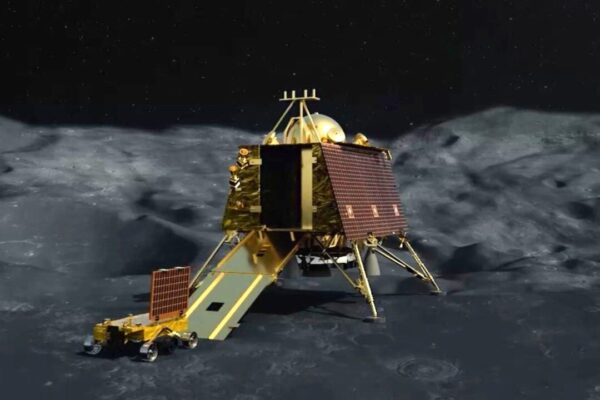ISRO’s Triumph: Chandrayaan 3 Successfully

The Indian Space Research Organization (ISRO) has once again showcased its prowess in space exploration with the successful touchdown of Chandrayaan 3 near the Moon’s South Pole. This remarkable achievement marks a significant milestone in India’s space endeavors and opens new avenues for scientific research and exploration beyond our planet.
Exploring the Moon’s South Pole: A Bold Step Forward
Unveiling the Mission Objectives
Chandrayaan 3, the third mission in India’s lunar exploration program, is designed to delve deeper into the mysteries of the Moon, particularly its enigmatic South Pole. This region has captured the interest of scientists due to its unique geological features and potential water ice deposits.
Crafting the Perfect Landing
A critical aspect of the mission was ensuring a precise landing. ISRO’s engineers and scientists meticulously calculated the optimal trajectory and descent strategy to ensure a successful touchdown. This meticulous planning aimed to avoid the challenges encountered by its predecessor, Chandrayaan 2, which experienced a communication loss during its landing attempt.
The Science Behind Chandrayaan 3
Probing Lunar Geology
One of the primary objectives of Chandrayaan 3 is to study the Moon’s surface composition and geological characteristics near the South Pole. By analyzing the data sent back by the lander, scientists hope to gain insights into the Moon’s history and evolution.
Searching for Water Ice
Water ice has long been a sought-after resource for future lunar missions. Chandrayaan 3 is equipped with advanced instruments to detect and analyze the presence of water ice in the permanently shadowed regions of the South Pole. This discovery could have profound implications for sustaining future human settlements on the Moon.
Overcoming Challenges and Celebrating Success
Learning from Setbacks
ISRO’s journey to lunar exploration hasn’t been without challenges. The lessons learned from Chandrayaan 2’s near-success have been instrumental in refining the strategies and technologies employed in Chandrayaan 3. These setbacks are a testament to the resilience of ISRO’s scientists and their commitment to pushing the boundaries of space exploration.
A Triumphant Touchdown
On 23 August 2023, Chandrayaan 3’s Vikram lander safely touched down near the Moon’s South Pole. The successful landing was met with jubilation and relief at ISRO’s mission control. This achievement reinforces India’s position as a leading player in the global space exploration arena.
Future Prospects and Beyond
Paving the Way for Future Missions
Chandrayaan 3’s success sets the stage for even more ambitious missions. As ISRO continues to refine its technology and expertise, the prospects for future lunar exploration, including manned missions, become increasingly feasible.
Global Collaboration and Knowledge Sharing
The success of Chandrayaan 3 isn’t just a national achievement; it’s a global milestone. ISRO’s willingness to collaborate and share its findings with other space agencies contributes to the collective understanding of the Moon and the universe beyond.
Conclusion
ISRO’s Chandrayaan 3 mission stands as a testament to human ingenuity, determination, and the relentless pursuit of knowledge. The successful touchdown near the Moon’s South Pole opens doors to new scientific discoveries, potential resource utilization, and future human exploration. As we look up at the night sky, we are reminded that the stars are no longer out of reach, thanks to endeavors like Chandrayaan 3.
What is Chandrayaan 3?
Chandrayaan 3 is India’s third lunar exploration mission, aimed at studying the Moon’s South Pole region.
What are the scientific objectives of Chandrayaan 3?
Chandrayaan 3 aims to analyze lunar surface composition, study lunar geology, and detect water ice in the South Pole’s shadowed regions.
Why is the South Pole of the Moon significant?
The Moon’s South Pole is of interest due to its unique geological features and the possibility of water ice deposits.
How does Chandrayaan 3 contribute to future lunar exploration?
Chandrayaan 3’s success paves the way for more ambitious missions, potentially including human exploration and resource utilization.

